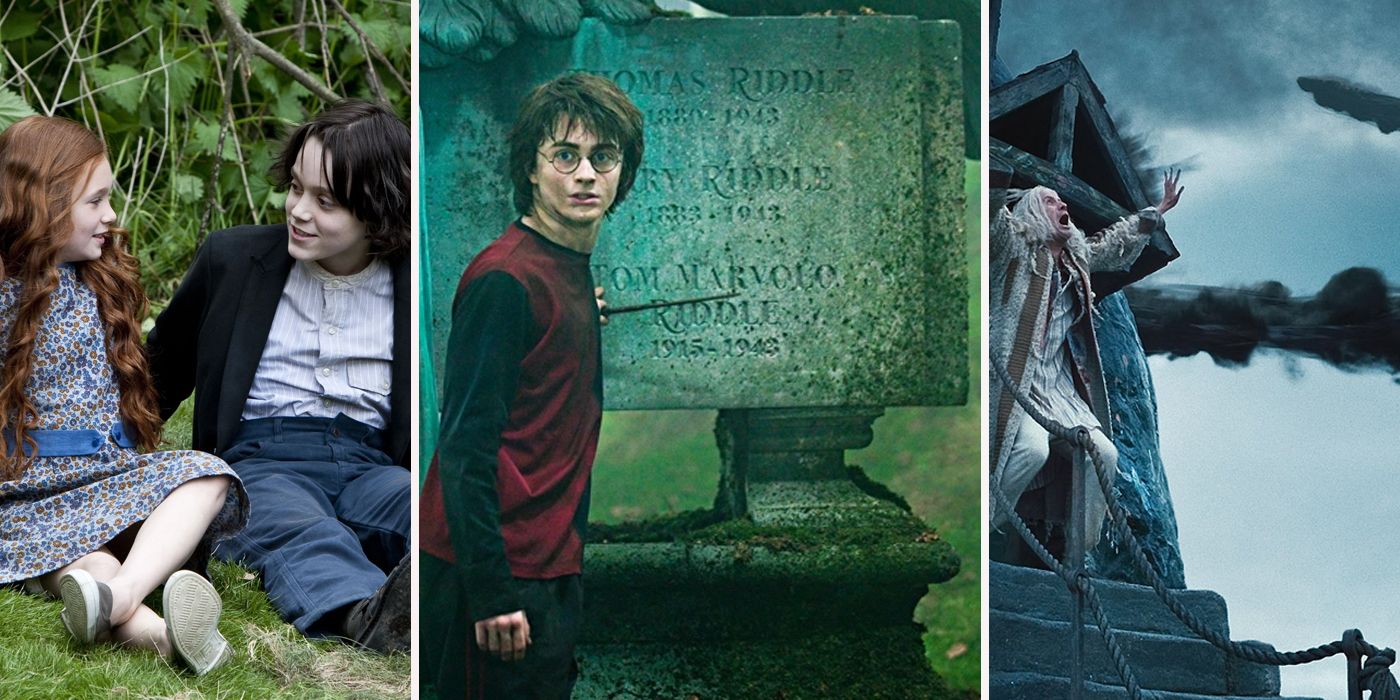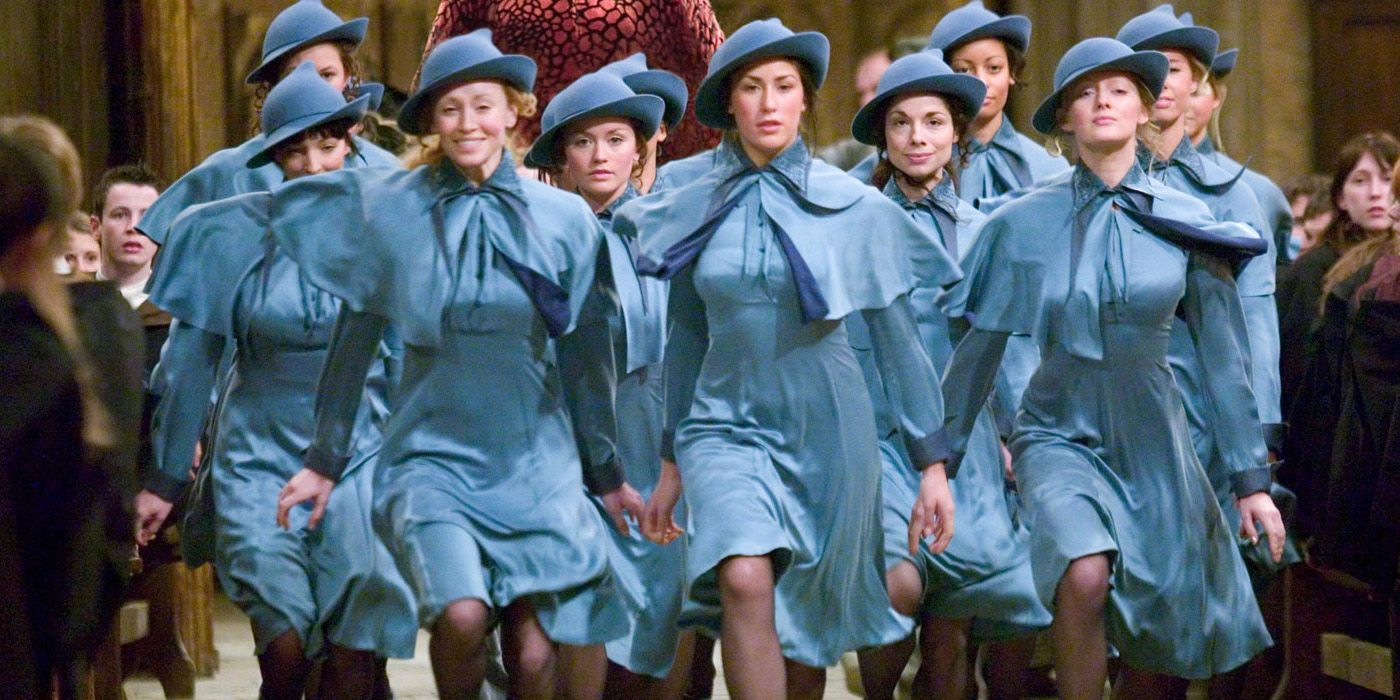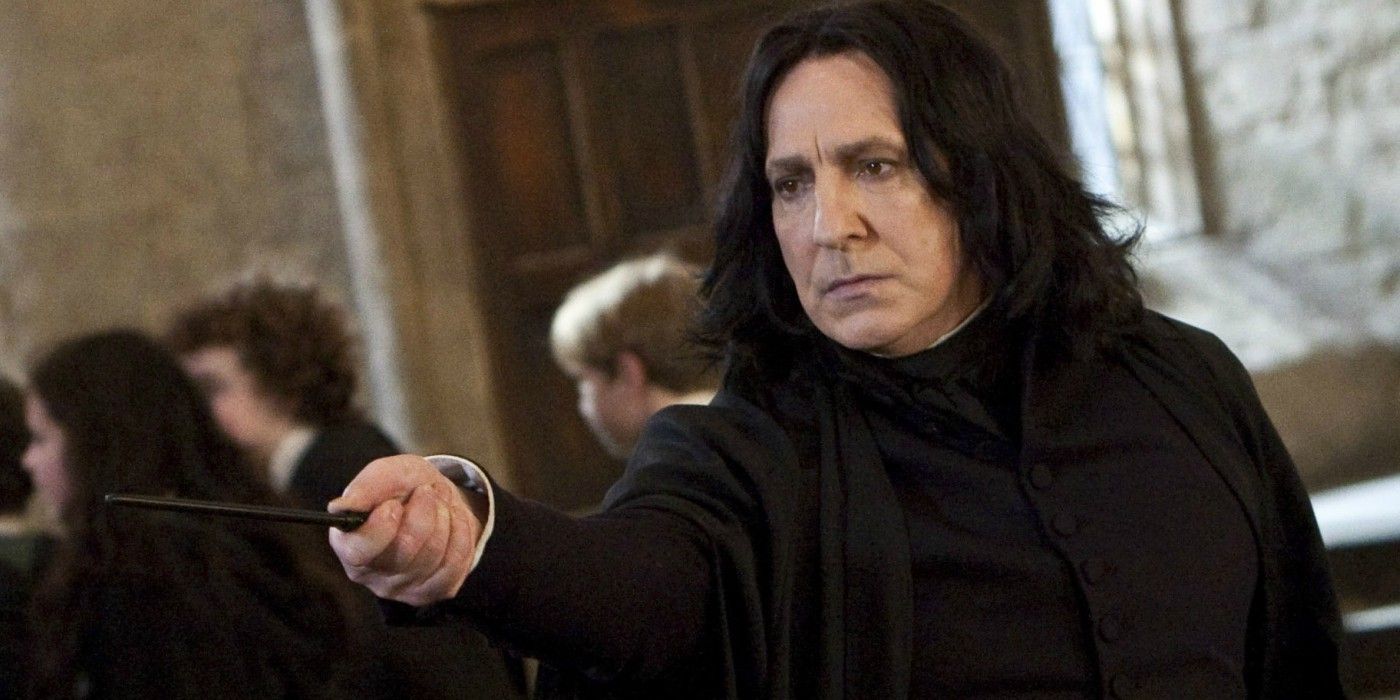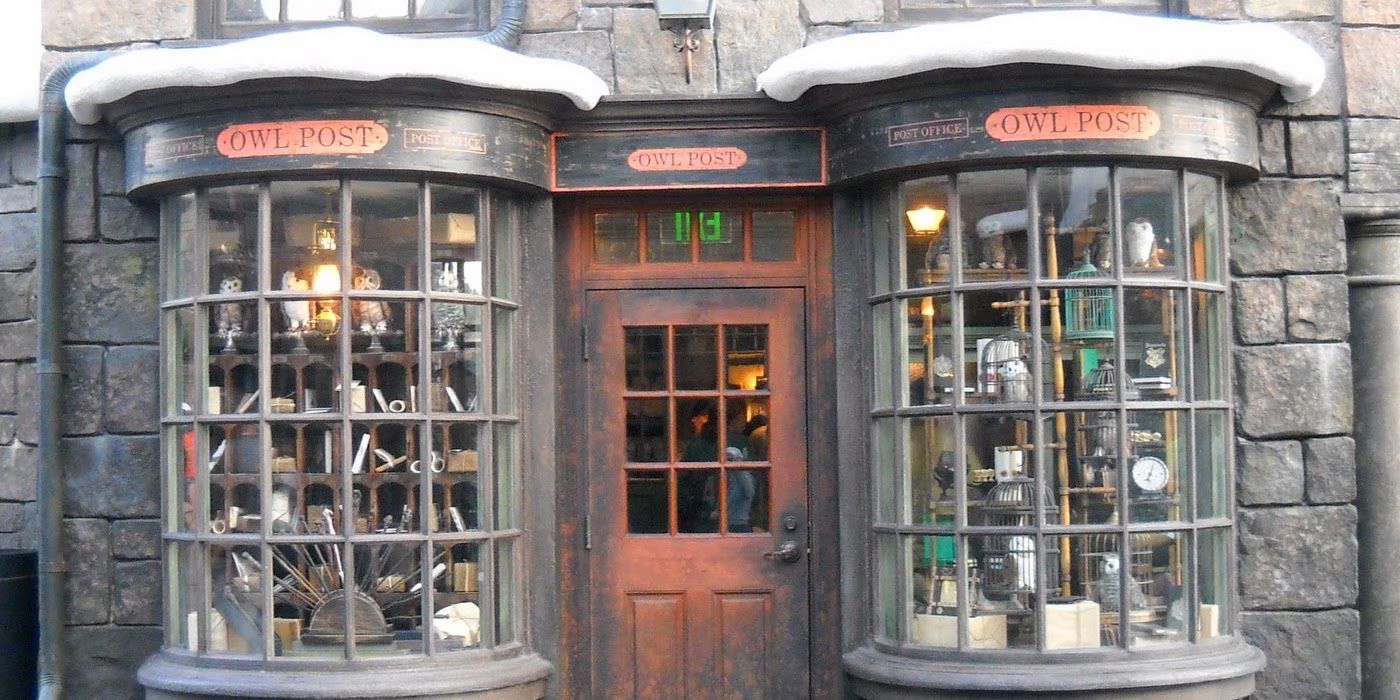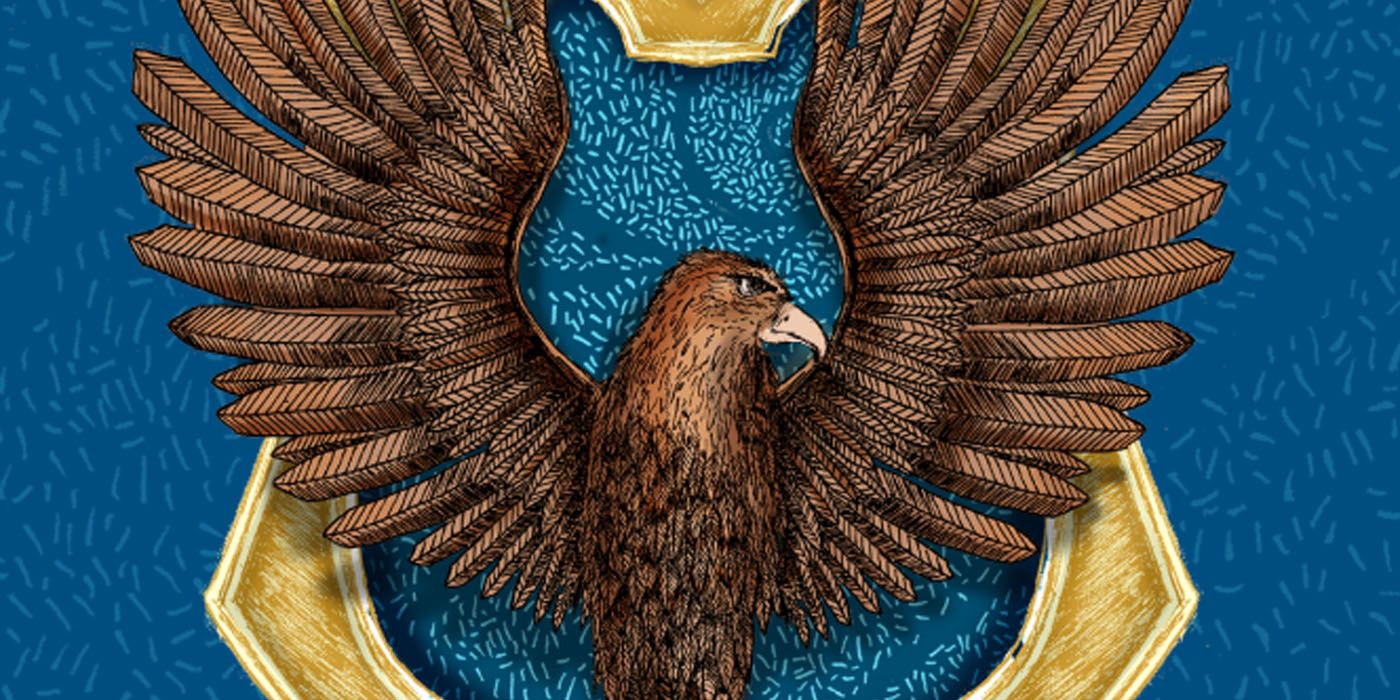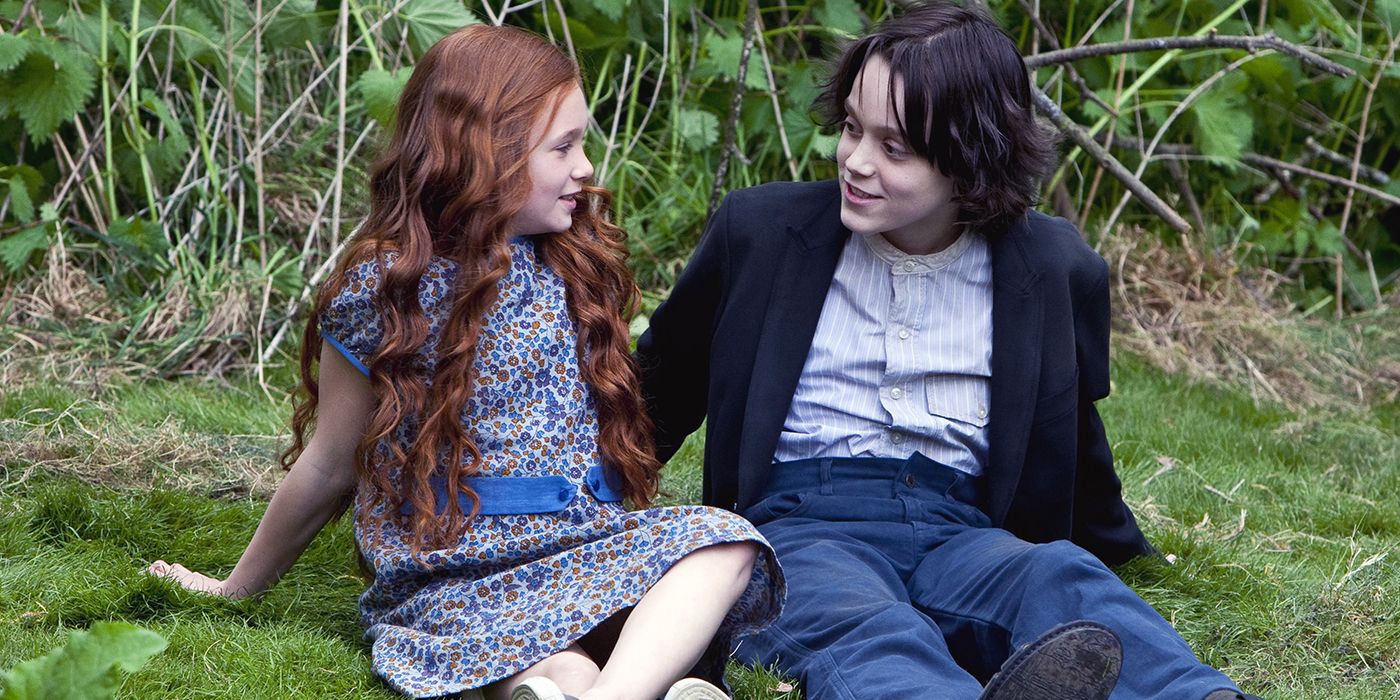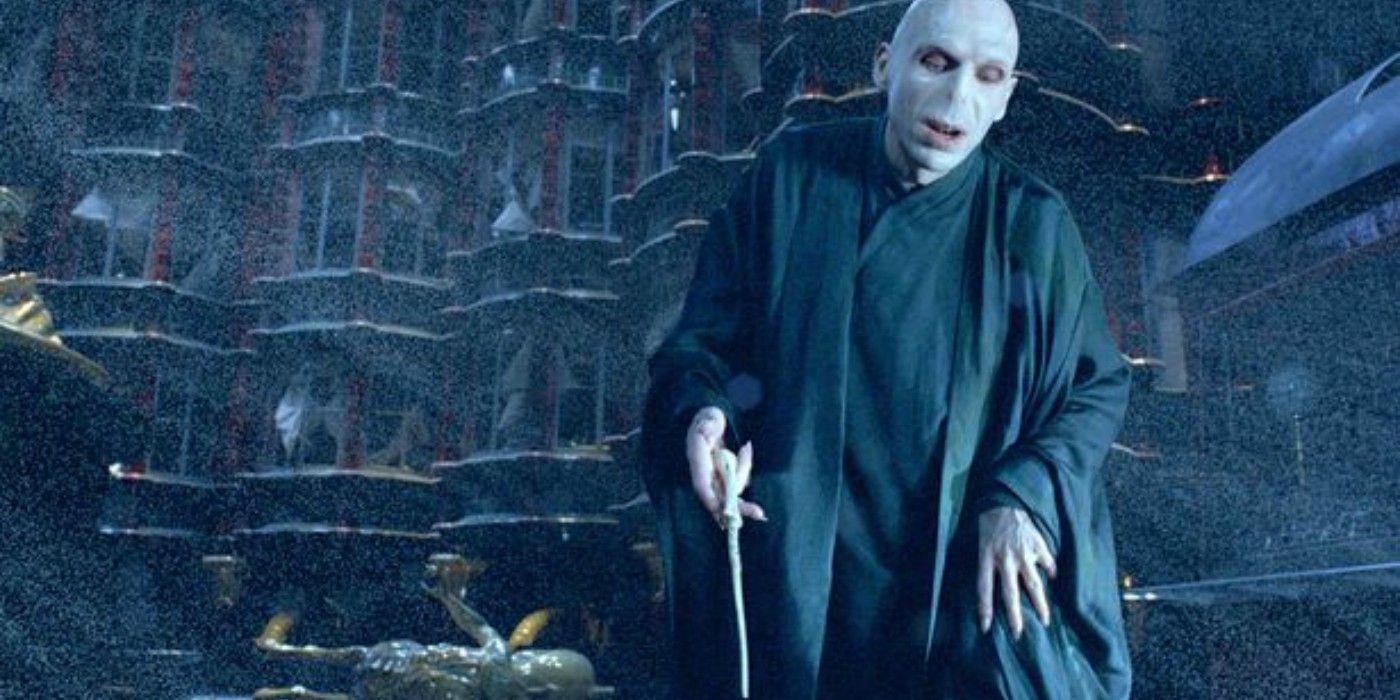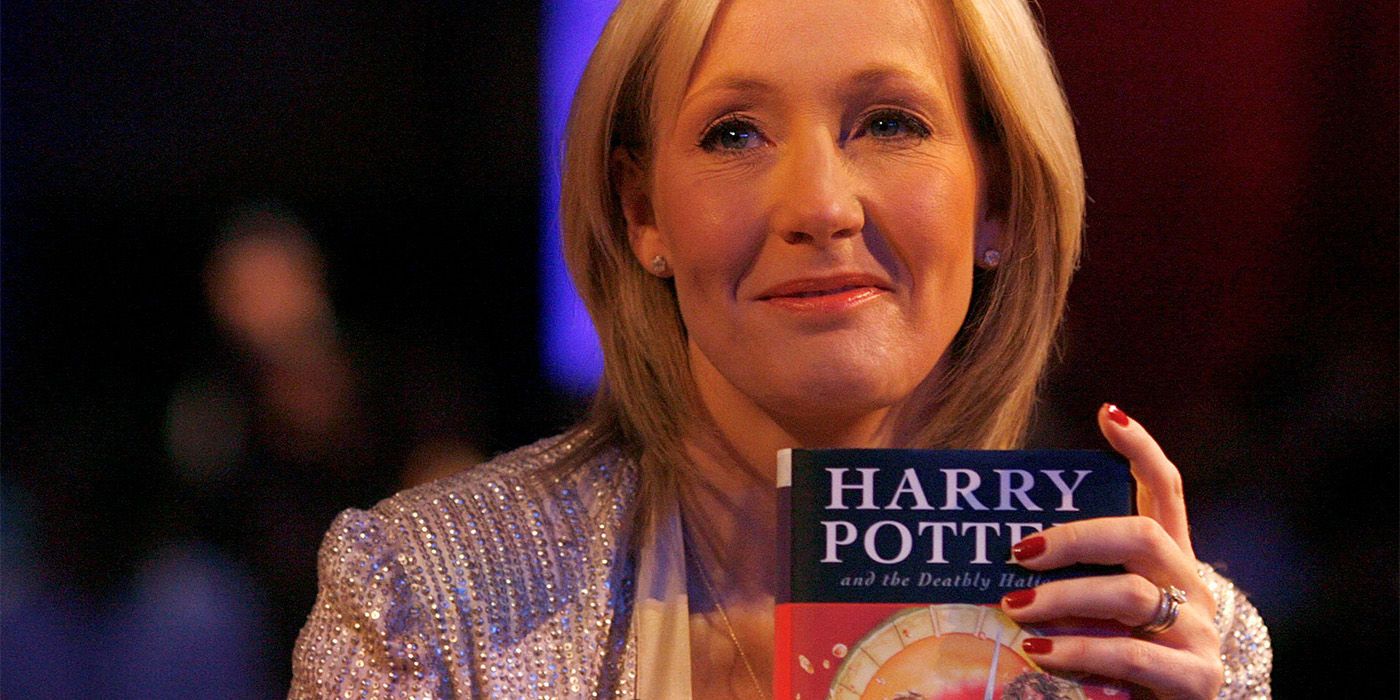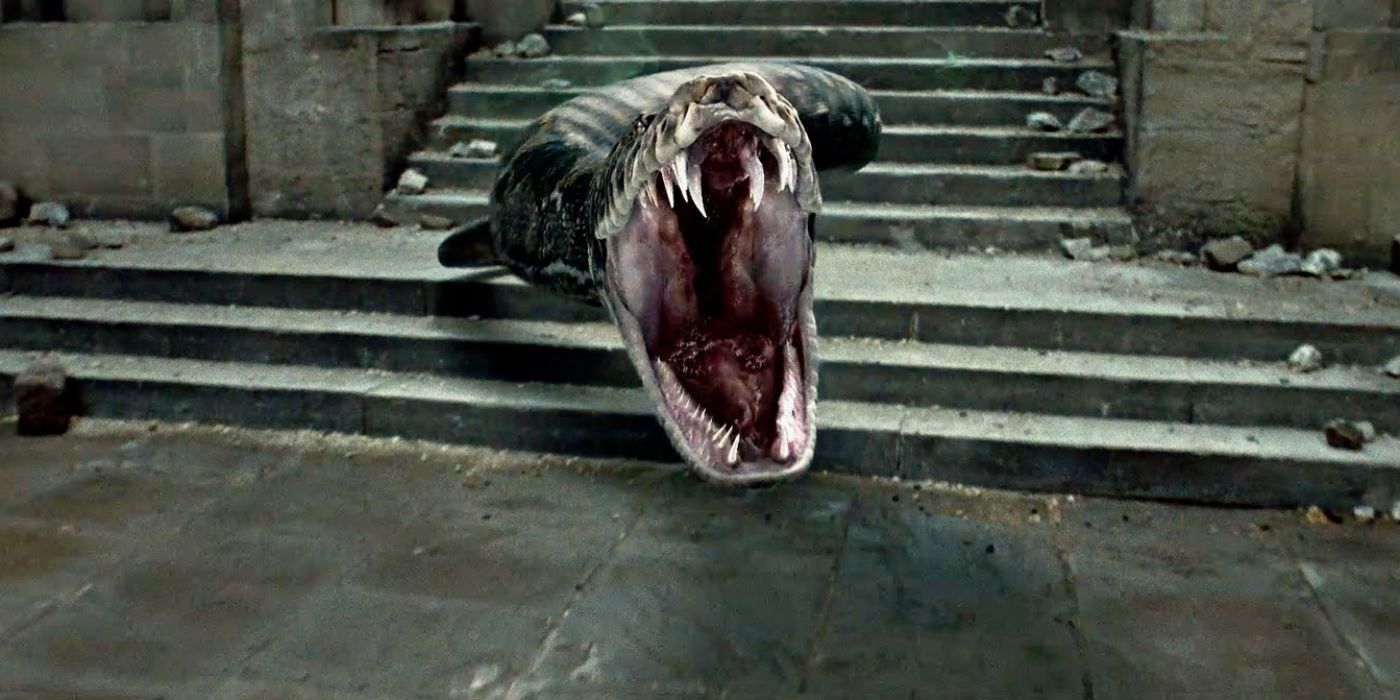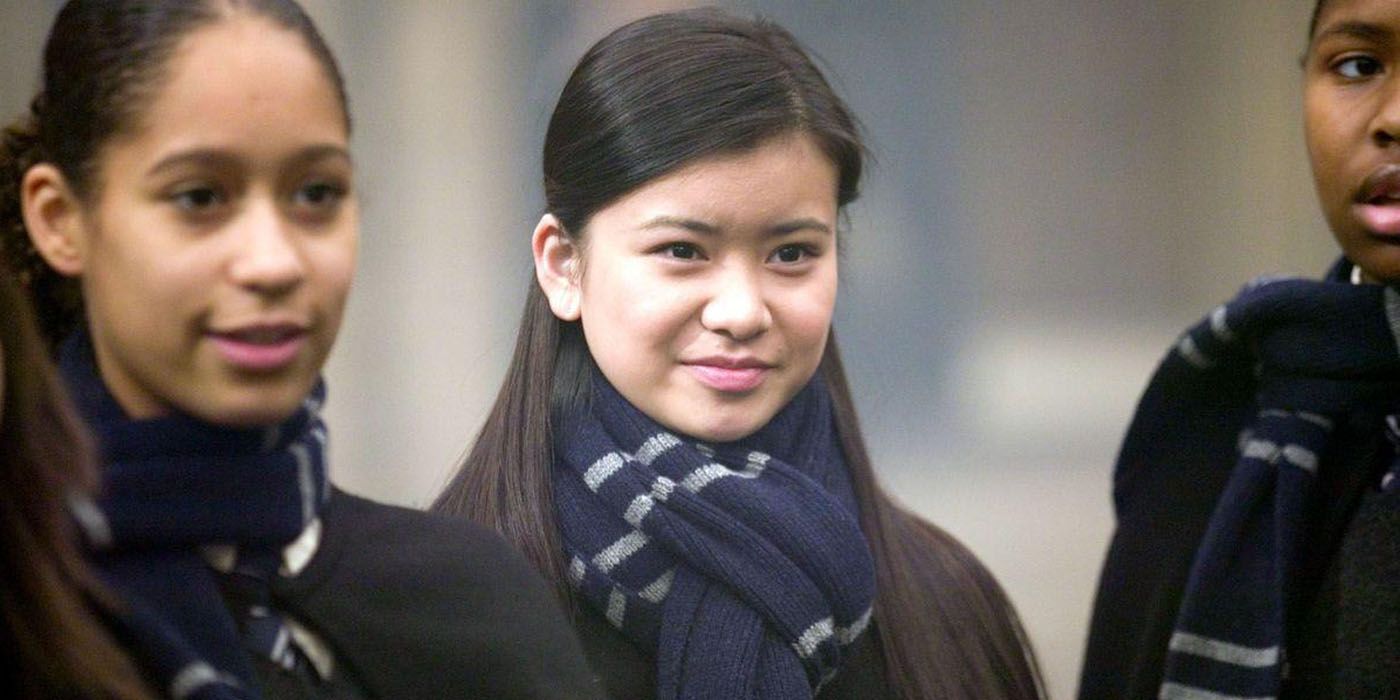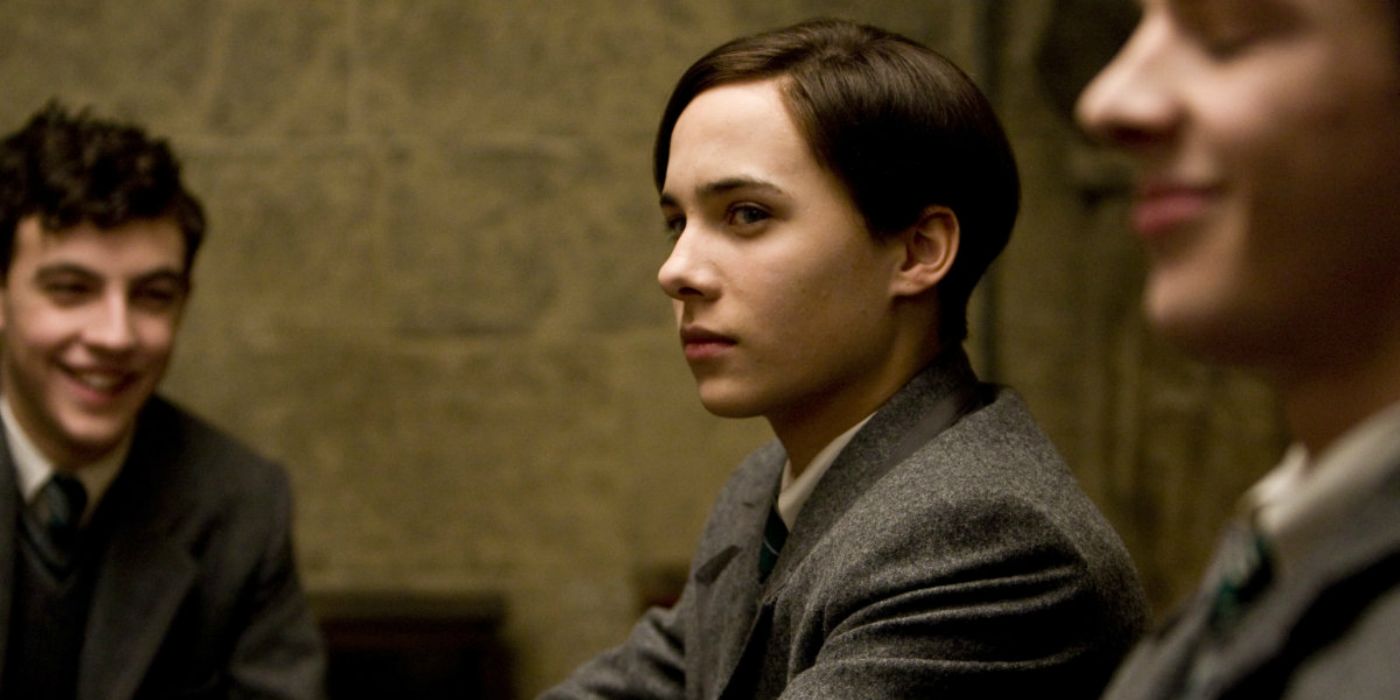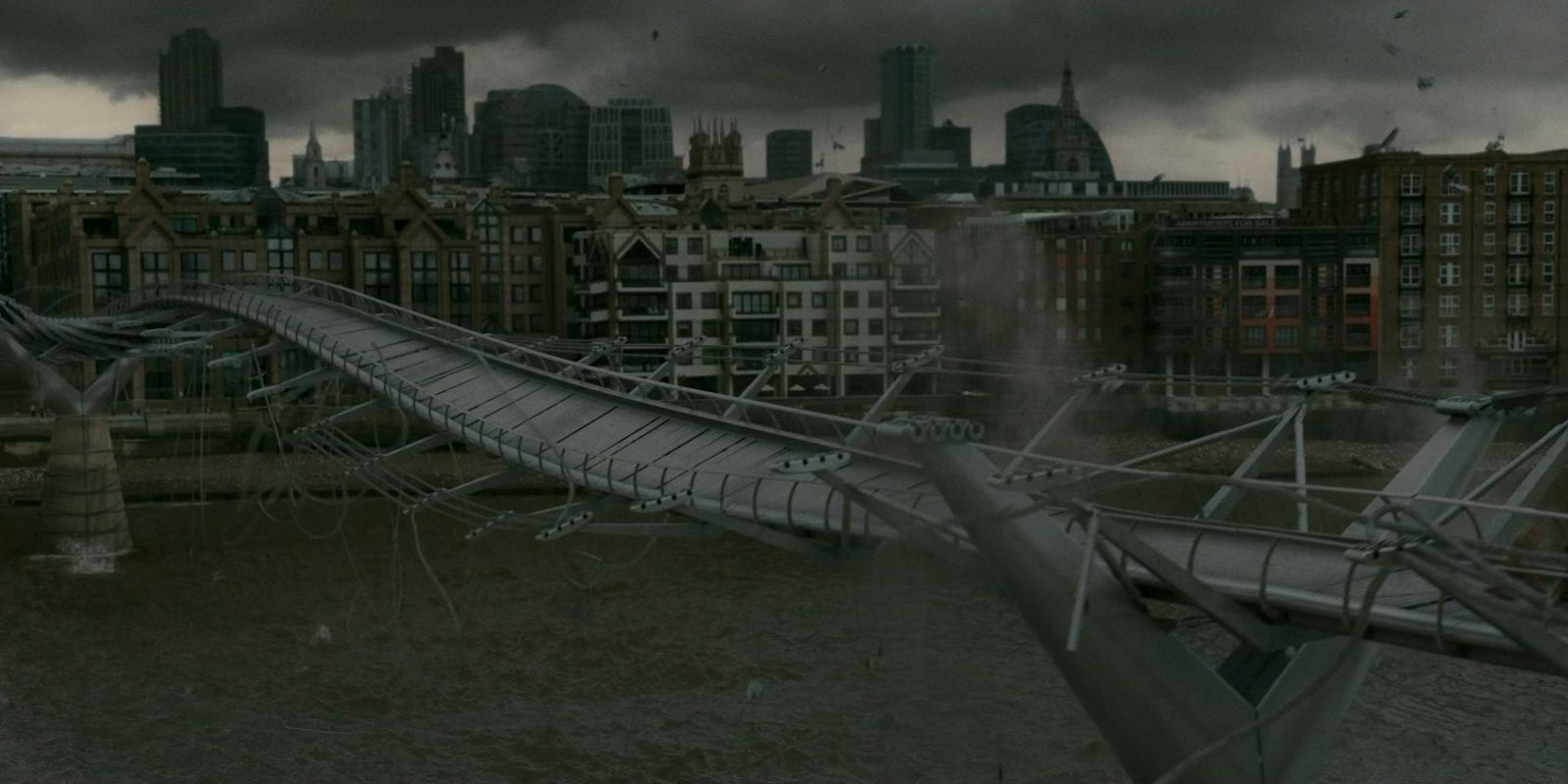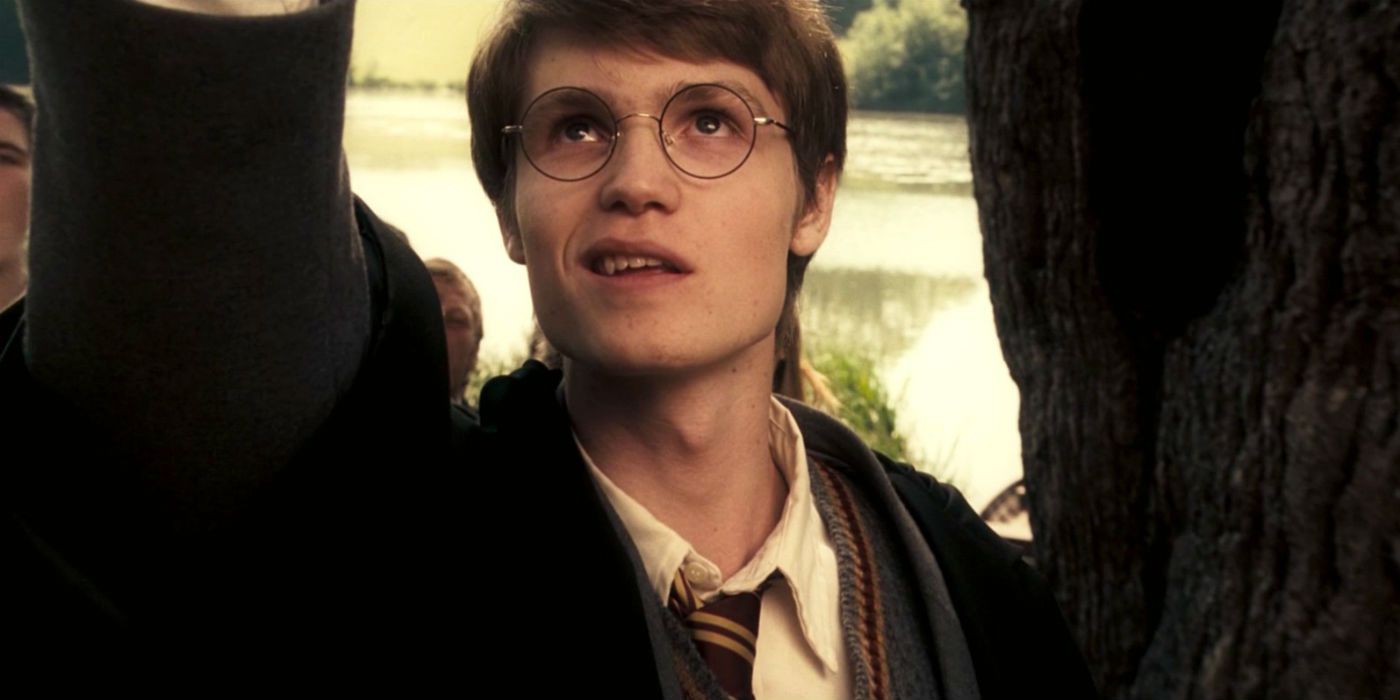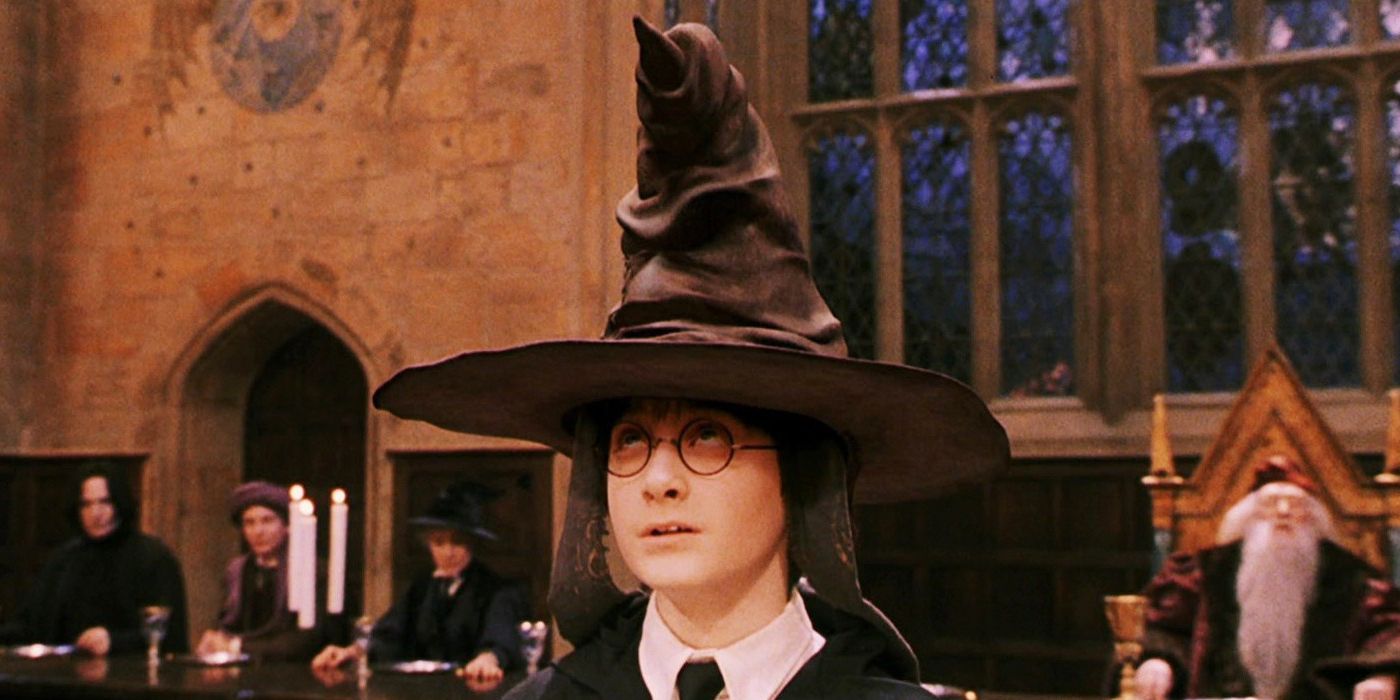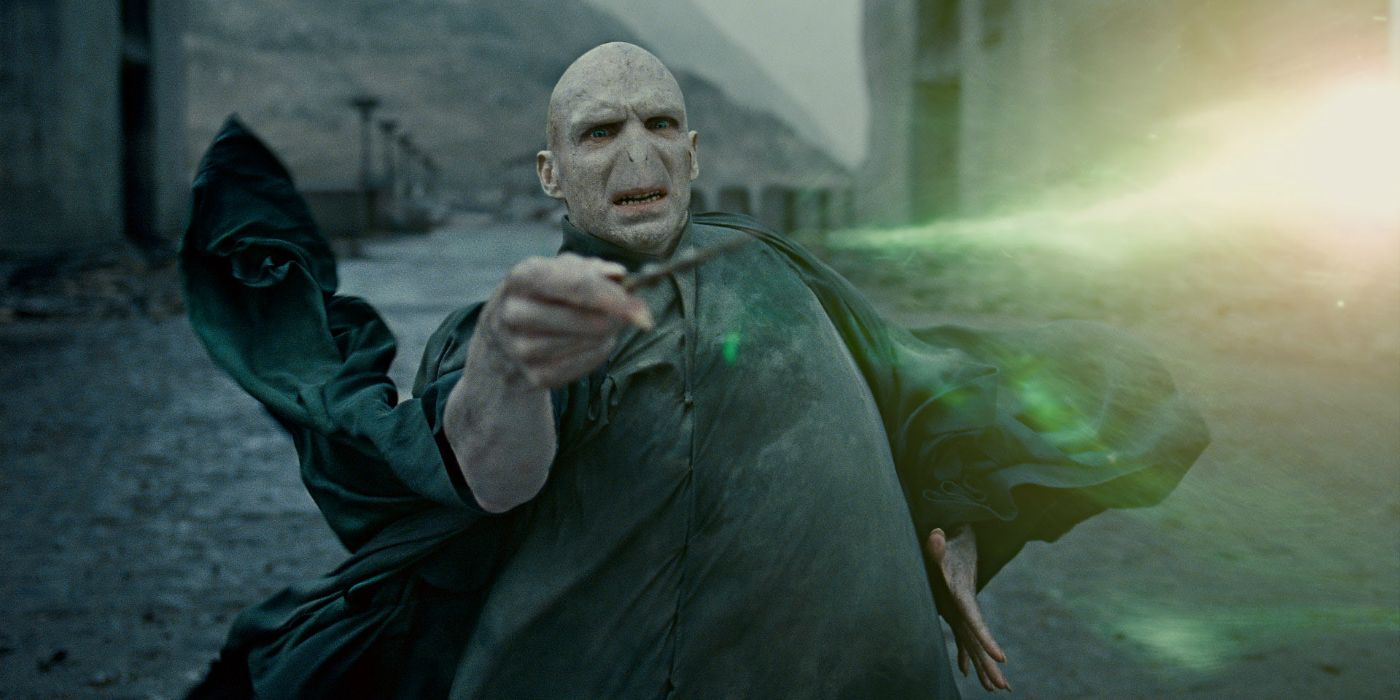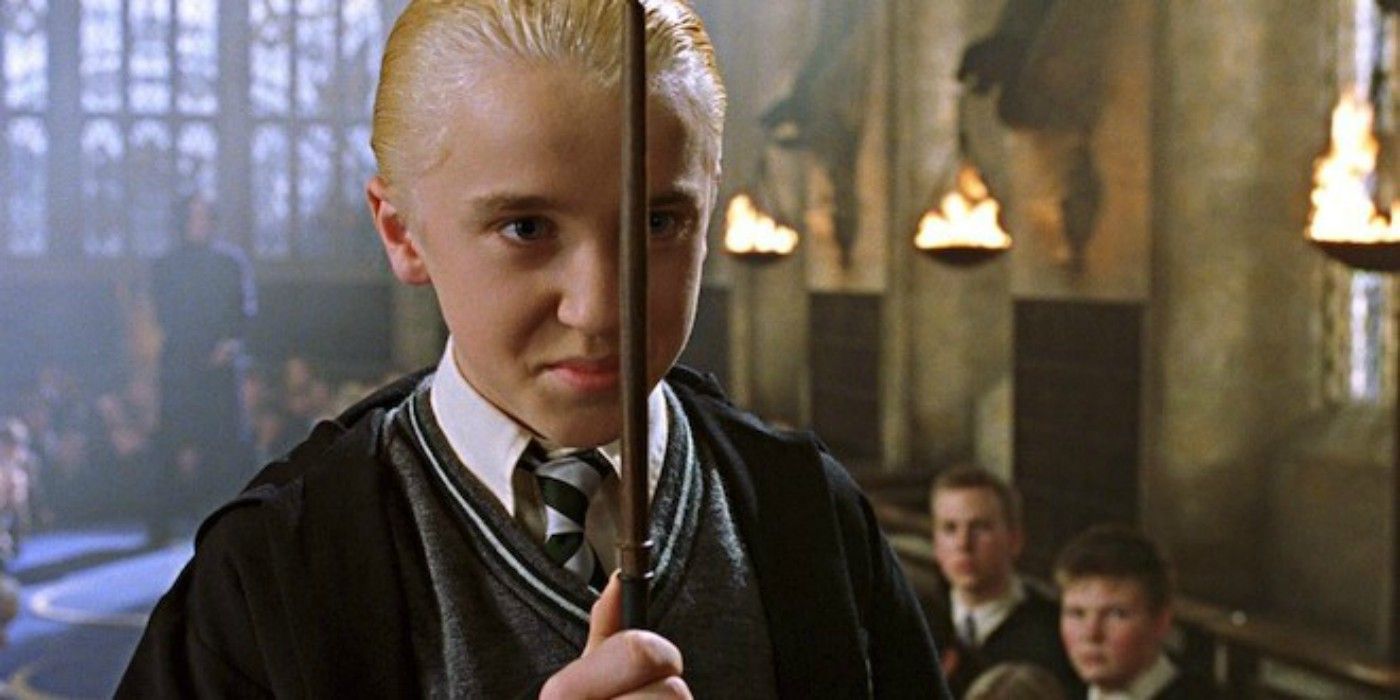Dear readers, we are pleased to inform you that you have a place at our School of Witchcraft and Wizardry. We will begin with a fifteen-question exam. Think you know everything there is to know about Harry Potter? Think again.
Even the most die-hard fans of both the books and the shows can make mistakes -- heck, their mistakes often lead to common misconceptions. With so much world-building, spells to learn and names to memorize, it’s easy to be caught drowning in an ocean of wizard-related information.
Sure, you may come up for air, but in the process you’ve let a few facts and tidbits sink to the ocean floor.
However, we’re less interested in what you don’t know than what you do know -- just very wrongly. Sometimes, it’s the fault of the movies changing it up to the scorn of Rowling’s adoring fans. Occasionally, it’s simple, consistent misreadings (or mis-viewings). Other times, it just makes sense for Ravenclaw’s mascot to be a raven.
So yes, you have a place at our School of Witchcraft and Wizardry, but approach with caution: everything you do know about the series will be questioned and picked apart. Soon, we’ll cast the biggest spell of all on you: the spell of enlightenment.
Here are the 15 Things Everyone Gets Wrong About Harry Potter.
The Beauxbatons and Durmstrang Students Aren’t Actually Same-Gendered
In Harry Potter and the Goblet of Fire, the wizarding world expanded its scope beyond the realms of Hogwarts. There’s other schools too.
From Bulgaria, there’s Durmstrang, a school that seems to be entirely populated by super-serious dark-haired boys wearing laughably stereotypical fur coats and wooly hats. The problem is, if you’re Scandinavian and not male, then you obviously can’t get accepted, right?
The same applies to the Beauxbatons too: a school of flowery French girls whose introduction into the Great Hall was complete with sighs, gymnastics and hummingbirds. There’s no chance for a European boy to get in, surely?
Well, what with the films playing to the two schools’ gender archetypes, you may have been misled: both the Durmstrang Institute and the Beauxbatons Academy are, in fact, mixed gendered. Otherwise Harry’s date, Parvati Patil, eventually pairing off with a "Beauxbaton" boy in the books wouldn’t have made sense.
Snape’s Still A Jerk
In Harry Potter and the Deathly Hallows, Part 2, Severus Snape’s character arc culminates in a moment of heroic redemption, where it’s revealed that he killed Dumbledore under the headteacher’s own orders, and vowed to protect all Hogwarts students from harm.
His death was a tragic one, sold terrifically by the late Alan Rickman, and every viewer soon turned from "Snape, what an a-hole!" to "Snape, my hero!"
Harry certainly thought so: he made sure Snape’s portrait remained at Hogwarts, and even went so far as to name his second son Albus Severus Potter in honor of him (and the man he killed).
However, that doesn’t really deny the fact that Harry endured years of emotional abuse under Snape...simply because Snape hated Harry’s father. Even Snape’s act of heroism may have just been for his persistent love of Lily Potter -- would he have batted an eyelid if the "Chosen One" turned out to be Neville Longbottom?
Students Don’t Get Their Hogwarts Letters On Their 11th Birthday
Everybody knows that as soon as a wizard or witch turns eleven, they get their invitation to Hogwarts delivered by owl through the post (unless you’re muggle-born, in which case it’s delivered by a special messenger). It’s just common knowledge. Wait... what? This isn’t true?
Part of the confusion may be that Harry’s birthday and the day that the letter is due to arrive -- at some unspecified point in the Summer -- are very, very close to one another. Also, another, more obvious reason may be that Harry gets his letter on his 11th birthday.
However, think about it: what if you were born right after the cutoff date? That would mean you’d have to keep quiet about being a wizard for almost an entire year. The only reason Harry received his letter so late was because of all the other Hogwarts letters sent to him by owl weeks before that the Dursleys managed to stop him reaching.
Ravenclaw's Mascot Is An Eagle, Not A Raven
Every Hogwarts mascot is meant to represent their respective house in some way. For Gryffindor, it’s the lion: brave, fearless, chivalrous. For Slytherin, the snake: powerful, self-serving, dangerous. For Hufflepuff, it’s the badger, because, well... of course Hufflepuff is stuck with the lame one.
However, for Ravenclaw, you’ll be forgiven for thinking that their mascot is the raven. The clue’s in the name, and there’s precedence with Slytherin. However, nope, it’s another bird: an eagle.
It’s a decision that’s both baffling -- especially given Ravenclaw's name -- and completely justifiable: the eagle is intelligent, wise, and according to prefect Robert Hilliard, “soars where others cannot climb.”
To be fair to J.K. Rowling, we suppose "Eagleclaw" doesn’t have quite the same ring to it...
Snape Wasn’t A Loner When He Was Younger
Through Snape’s sacrifice in Deathly Hallows, we are shown via the Pensieve a series of his childhood memories: his friendship with Lily Potter, where his feelings towards her blossomed into love. We also see James Potter and his gang of rapscallions, who pick on Snape when he’s alone.
He’s always alone, surely -- he has the demeanour for it, and his pale face and greasy black hair doesn’t exactly scream "social butterfly." However, this isn't true.
Snape did have friends when he was younger… they just happened to be Death Eaters-in-the-making. There was Lucius Malfoy, Mulciber, and a whole other load of Slytherin baddies.
It’s just that James and his gang had a trick up their sleeve (or in their pockets) to catch out Snape when he was alone -- the Marauders Map.
The ‘T’ Isn’t Actually Pronounced In ‘Voldemort’
Fast-becoming the most iconic villain ever (second only to Darth Vader), Ralph Fiennes’ Voldemort is less "He Who Must Not Be Named" and more "He Who Must Be Named But Only When Mispronounced."
For in 2015, J.K. Rowling admitted via Twitter that she intended Voldemort’s name to be pronounced ‘Vol-duh-more’ (as in, rhymes with paramore), and not the pronunciation that everyone uses that was set in stone through the first Harry Potter movie.
There’s meaning behind it, though -- it’s not just a fancy literary twist for Rowling to flaunt -- "Voldemort" is French for "flight of death," which seems perfectly suited to one of the most terrifying baddies put to page and screen.
We’ll stick with "Vol-duh-mort" though. Let’s call it force of habit. In all fairness, Rowling did also admit on Twitter that she was pretty sure that she was "the only person who pronounces it that way."
Rowling’s Writing Career Wasn’t A Rags-To-Riches Tale
It’s a heartwarming, inspirational tale of a person with a lowly background rising up and becoming successful and known all around the world. No, we’re not talking about Harry Potter here, we’re talking about J.K Rowling -- or, at least, what we think we know of her.
As a single mother living on welfare, Potter was the jolt of inspiration needed to kickstart her career -- and her life. Only that her reliance on governmental income was born out of choice, not necessity; sure she was on the dole, but that gave her ample time to write her bestselling novel.
Rowling has never denied this -- heck, when there was a media frenzy a few years ago, she did nothing to substantiate the media’s claims.
Nagini Was Never Freed By Harry Potter
When books and movies are released and become a huge cultural phenomenon, many adoring fans often manage to read into its themes and narratives a little too much.
This is certainly the case for Harry Potter, where speculation of an act of kindness from Harry in Harry Potter and the Sorcerer’s Stone has lead to a widespread belief that that rumour is entirely true.
The rumour in question is this: Harry, after hearing a snake communicate to him via parseltongue at a zoo, allows this snake to escape. This snake turns out to be Nagini, a horcrux and henchman (hench-viper?) of Voldemort’s.
Why does this rumor exist in the first place? Well, because the snakes look a bit similar, and it would be a cool ironic twist to the story. It's a shame, then, that the snake that Harry released in the first movie was a python, and that its voice was male as opposed to Nagini’s distinctly feminine one.
Ravenclaw's House Colors Are Not Blue And Silver
While books are able to describe in great detail, it’s up to the movies to visualize it. Sometimes, the descriptions don’t look so great. We can (mostly) agree that blue and silver is a much prettier color combo than blue and bronze, and the movies certainly went with the consensus.
THis leads us to yet another case of Ravenclaw’s unfortunate identity crisis: Rowling imagined the eagle-crested house as bearing the blue and bronze colors of a true Ravenclaw-ian.
According to Pottermore, the color palette was chosen to represent "sky and eagle feathers"-- instead, the filmmakers decided to cramp Slytherin’s green-silver style by sharing a color.
In fairness, with Gryffindor clearly being the house of Hogwarts, perhaps the filmmakers decided bronze and gold were just too similar to one another.
Voldemort's Inability To Love Wasn't Because Of A Potion
A knowledgeable Harry Potter fan knows that Voldemort’s inability to love was because he was conceived by his parents under the influence of a love potion. A wise Harry Potter fan knows that that’s complete rubbish, and that Tom Riddle was unable to love simply because he wasn’t loved as a child.
The way he was conceived is still relevant though -- it may have emphasized his inability to understand love, and, according to Rowling, was “a symbolic way of showing he came from a loveless union.”
However, if his father hadn’t killed his mother, things would have changed, and Voldemort may have understood what love felt like.
Anyway, can you imagine a world where every love potion-influenced conception had this effect? There’d be Voldemorts running amok all over the wizarding world.
Death Eaters Can't Actually Fly
Here’s a case of the books and movies deviating where book readers can’t complain. Why? Well, the ability of flight given to the Death Eaters in the films is really damn cool, and allows for stunning set pieces like the opening scene of Harry Potter and the Half-Blood Prince.
Alas, to Rowling, their flight is just a flight of fancy. Her Death Eaters can apparate, sure, and many fans have mistaken the movie’s depiction for exactly this, but that’s the extent of their abilities. Still, apparating in London beats taking public transport.
Not every Death Eaters has to suffer the unfortunate curse of not being able to fly, thankfully -- Snape and Voldemort himself are granted the ability in the books, and make good use of it. After all, "Voldemort" literally means "flight of death" in French.
James Potter Wasn't A Seeker
Everyone knows that Harry Potter has his father’s face and dishevelled hair (and his mother’s eyes, but that’s not that relevant right now). In an attempt to lay the parallels between father and son on thick, the movies went one step further and made James Potter out to be a stellar match-winning Seeker.
However, this is simply not true. While Harry revels in his position as a Seeker, as the bloke in the Quidditch team who sits around and looks for a tiny golden ball while all the others actually play the damn sport, his father’s favored position was as a proficient Chaser.
You know, the guys who throw the Quaffle to each other and try and get it through one of the hoops to score a goal -- i.e., someone who actually does something on the field.
Harry Never Chose Gryffindor
Harry Potter, The Boy Who Lived, The Chosen One, one of the best students to ever have come out of Gryffindor -- most Harry Potter fans see him as the face of the house that both Dumbledore and JK Rowling gave preferential treatment to.
Most also know that the Sorting Hat could have very well assigned his name to Slytherin history.
However, what a lot of people may have assumed is that Harry chose Gryffindor -- after all, his mother and father ended up in that house, so why wouldn’t he want to? He may have, but all he pleaded with the Sorting Hat to not be put in Slytherin. Heck, for all we know, he may have wanted Hufflepuff.
Voldemort's Soul Was Split Into Eight Parts, Not Seven
A horcrux is an object containing a teensy bit of your soul, obtained through carrying out a horrific act -- a heavy price to pay for a stab at immortality.
To most, even thinking about one horcrux is enough to make the blood boil and the bones shiver. However, Voldemort -- who was probably compensating for something -- decided to go all out and split his soul into seven fragments, creating six horcruxes in the process. Greed is a sin, after all.
Seven soul fragments wasn’t arbitrary -- it’s Voldemort’s lucky number (so he does have humanity after all) and he believed in its power. However, what he didn’t account for is an accidental horcrux
Enter Harry Potter, who was "blessed" with a part of Voldemort’s soul on the night of his parent’s death. So it’s seven horcruxes, eight soul fragments (the final soul fragment residing in Voldemort himself).
Not Everyone In Slytherin Is Evil
It’s difficult to blame fans for typecasting Hogwarts students by the House they’re given. After all, the Sorting Hat typecasts them itself, so why can’t we? Ravenclaw are intelligent, Gryffindor are the good guys, Slytherin are the baddies, and Hufflepuff also exists.
Wait, go back a second -- Slytherin doesn’t automatically mean "evil." Sure, you have your Malfoys, your Riddles, basically all of the Death Eaters, but since when was "ambitious" and"‘self-motivated" (the trait that Rowling says defines the House) ever a bad thing?
We can’t forget Snape, Regulus Black, Andromeda Tonks, and even Merlin. Also, by the end of the series even Malfoy is arguably on his way to becoming one of the good guys, choosing to side with Harry against the dark side.
---
Can you think of any other facts that even die-hard fans get wrong about Harry Potter? Let us know in the comment section!

